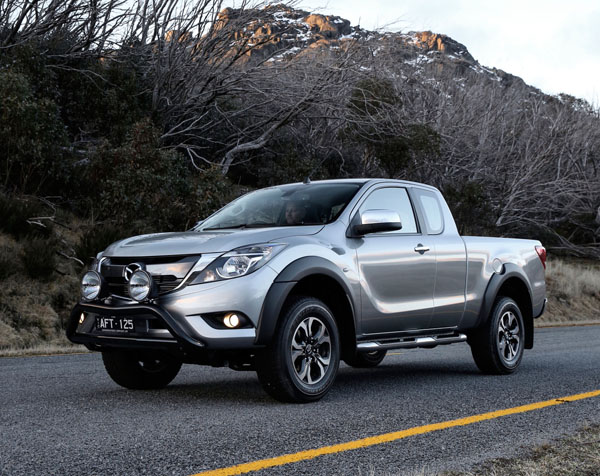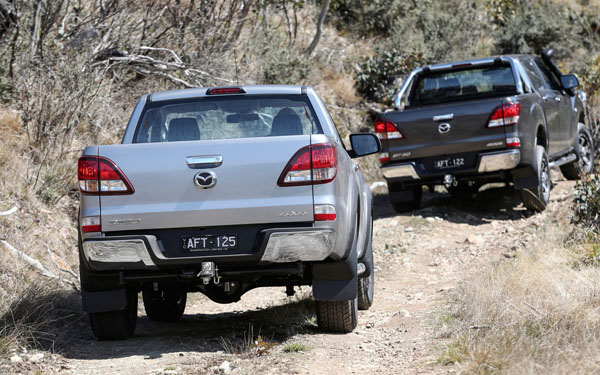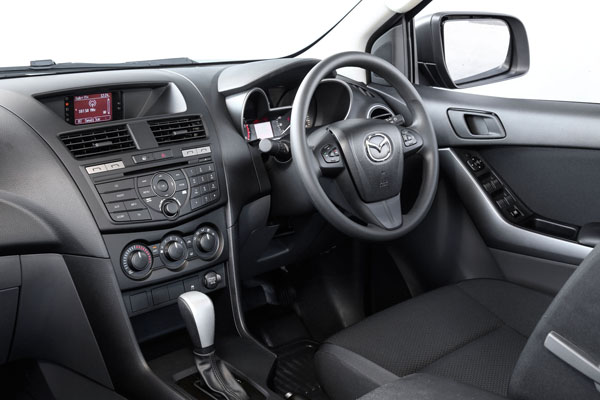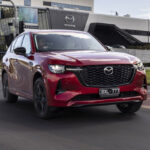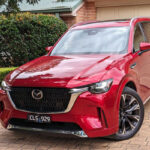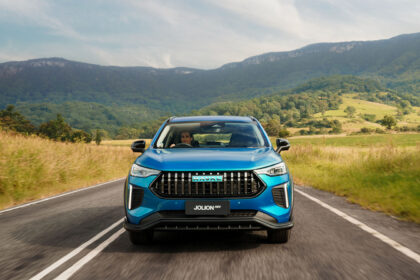Mazda is in serious competition for number two spot in the Australian sales race. While Toyota is in first place by a huge margin, Mazda, Hyundai and Holden are at it hammer and tongs for the second spot on the podium.
What better way to increase sales than to upgrade its BT-50, Mazda’s entrant in one of the hottest of all market segments in Australia.
Though this area is apparently that of light commercial pickup trucks the big movers aren’t the working vehicles, rather dual-cabs with stacks of accessories are the big sellers. We suspect these have by far the biggest profit margins, though obviously no one is going to give us details on that.
The brief to the Japanese program manager, Takasuke Kobayashi, for Mazda BT-50 was simple, make it look tougher and more masculine.
Kobayashi-san, who comes from a country that’s less brainwashed than Australia in political correctness, said the BT-50 should appeal to “the Yummy Mummies, as well as the Crocodile Dundees”. Love it!
The latter’s a smart move because Aussie mums appreciate the advantages of having a big pickup with stacks of interior room, and can more than hold it’s own in the parking battle outside school at pickup time.
Anyhow, Mazda BT-50, while still having a more of a sloping front than is the norm for this class, has been toughened up by having a bigger, bolder grille shape. Interestingly, while this does give the pickup a harder look the front guards are unchanged in their swooping lines.
Similarly, at the rear, the taillights still occupy the same area of real estate but have been given stronger shapes and contrasts in their lenses.
The Australian market is very important to Mazda, being the largest outside Japan on a population basis, so Kobayashi-san paid us the honour of coming to Melbourne to explain the uprated design. With 21 years experience in Mazda commercials he was fascinating to listen too.
Still regarded purely as a commercial vehicle in Japan, the BT-50 hasn’t had a huge number of changes such as are necessary to keep a car fresh. Some of the bits that were previously chromed are now finished in black; the satellite navigation system, when fitted, has been significantly upgraded; rearview cameras aren’t standard on all, but are on the option’s list for every vehicle.
Engines remain as before, a four-cylinder 2.2-litre turbo-diesel with 110 kW of power and 375 Nm of torque between 1500 and 2500 revs; and a 3.2-litre five-cylinder with 147 kW, and 470 Nm from 1750 and 2500.
The bigger engine isn’t there to provide straight-line performance, but give significantly more towing ability – 3500 kg versus 2500 kg. (Though given the rapidly increasing number of ‘sports utes’ on the roads we wouldn’t be surprised to see them taking on one another in traffic-light drags.)
Six-speed manual and six-speed automatic transmission are offered. The auto remains as before but the manual has been modified to give better shift feel.
Mazda BT-50 can be bought with 2WD (rear wheels) or 4WD.
Body types are single-cab, extended-cab (Freestyle in Mazda speak) and dual-cab. The latter is expected to make up close to two thirds of all sales. Freestyle has small back doors with a rear area that has a pair of sort-of seats with safety belts. Comfort is not their strong point.
A cab-chassis is offered in both the single and dual-cab models.
Active safety sees not only car type ESC traction control and ABS systems, but also a unit to sense possible rollovers and prevent or mitigate them. The anti-rollover is handy in a tall commercial pickup. Passive safety is provided by twin front and side airbags in all, with curtain bags in the Freestyle and dual-cab.
Trim levels are XT and XTR throughout the range, with the topline dual-cab getting the unlikely tag of GT.
During an extensive road test program organised by Mazda we drove a selection of vehicles, though only with the 3.2-litre five-cylinder engine. We were impressed by the off-road ability on a fairly serious trek through the bush and found the 4-Low mode with electronic aids took most of the hard work out of driving.
On-road there’s no doubt these are light trucks, albeit pretty sophisticated ones for their class. There were lower noise levels than we remember from the superseded model and handling was safe and positive.
Around 10 per cent of all Mazda sales in Australia are of the BT-50 and we feel this mid-life upgrade will do the sales figures nothing but good.
The large BT-50 range comprises 23 variants, ten 4×2 and thirteen 4x4s. Prices of the 4×2 models range from $25,570 for a 2.2-litre diesel manual XT single cab chassis through to $43,630 for a 3.2-litre petrol automatic dual cab XTR pickup. The 4×4 range starts at $36,850 for a 3.2-litre manual XT single cab chassis and peaks at $53,790 for a 3.2-litre petrol automatic GT dual cab pickup.
These prices do not include dealer or government charges. Contact your local Mazda dealer for drive-away prices.




